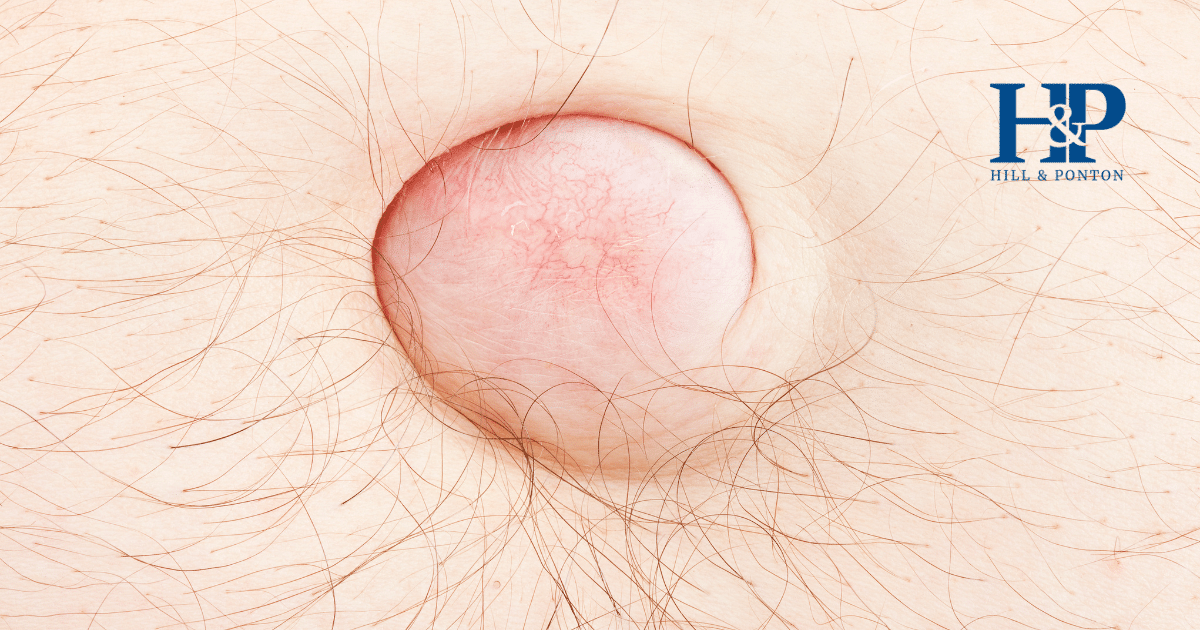In the world of VA claims, it is arguable that advocates see just about every kind of condition, illness or injury that can befall a U.S. military veteran. Certainly, advocates see certain kinds of conditions more than others—such as lumbar spine conditions, Diabetes Mellitus and the plethora of conditions caused by exposure to Agent Orange, and more recently Gulf War conditions. What we don’t see much of are injuries due to cold weather exposure. Veterans who suffer from these types of injuries face health conditions and often limitations due to loss of limb that other veterans do not experience.
Cold injuries have long been recorded throughout history, even as early as the ancient Greeks, who wrote via Xenophon their king, about the loss of nearly half the Spartan army due to cold injuries in their trek across the Carduchian Mountains (southern Turkey and northern Iraq) (Golant et al. Cold Exposure Injuries to the Extremities. 2008). Cold injuries have also been recorded in or during:
- Sweden in the 1700s
- American Revolution
- Era of Napoleon during the Franco-Russian War (Moscow 1812)
- Crimean War (1853)
- American Civil War (1861 – 1865)
- World War I (trench foot)
- World War II (frostbite)
- Korean War & Vietnam (trench foot & frostbite)
Periodic cases of cold injuries pop up now and then, and we see these mostly in instances where the veteran was stationed in a sub-freezing location for an extended period of time. For example:
- Veteran stationed in Alaska, obliged to work for long periods of time in the sub-freezing temperatures while ensuring that all runways and roads are cleared of snow and ice
- Veteran stationed in Korea, obliged to stand guard for two hours at a time in the sub-freezing temperatures
Cold Injuries Sustained in Korea 1950-1951
In 1951, The Army Medical Research Laboratory in Fort Knox, KY, published a study, Cold Injuries in Korea During Winter of 1950-1951. This study, released so quickly after the Korean War, provides incredible data on cold injuries that were sustained by U.S. soldiers in Korea. In November of 1950, the Army Hospital in Osaka, Japan, was designated to accommodate cold injury casualties. Soldiers with frostbite and similar conditions were evacuated from Korea and treated in the Cold Injury Section of the hospital. “While not all cold injuries were sent to this section,” says the study, “a total of 4,216 patients were admitted with a diagnosis of cold injury. This represents more than one-half of the estimated total of men evacuated from Korea because of cold injuries.” Clinical studies were undertaken for the purpose of developing improved prophylaxis, diagnosis, treatment and general management of these conditions. The data for this particular study was obtained from these clinical studies and the photographs taken in the hospital.
Lt. Colonel Orr, M.C. and Captain Fainer, M.C., the authors of this study, remind their audience that the weather conditions on Korea in the winter of 1950-1951 were the most severe ever experienced by American fighting forces. While American troops had been stationed in arctic and subarctic regions such as Alaska, Canada and Greenland, they had never been engaged in combat in these regions. Therefore, the American troops in Korea had absolutely no idea how to cope with the extreme weather conditions, and their suppliers had no idea how to properly outfit these troops with cold weather gear appropriate to their situation.
Extremities were the most frequent site of injury in soldiers frostbitten in Korea. Based upon the 1,880 clinical studies, cold injuries were classified into four degrees of severity.
First Degree: Numbness, erythema, swelling and superficial desquamation of the involved part. (16.7% of cases) The usual sites of injury for first degree frostbite were the toes, heels, and plantar surfaces of the feet, and fingertips.
Second Degree: Vesiculation of the skin – involving only partial thickness of the skin and does not extend into subcutaneous tissue. (33.6% of cases) The usual sites of second degree frostbite on the feet were toes, particularly the great toe and the heels. Usually the vesicles peeled away in an average of 24 days after frostbite.
Third Degree: Involves entire thickness of the skin, extending into various depths of subcutaneous tissue. Vesicles may or may not appear. (43.6% of cases) Like second degree frostbite, the usual sites of third degree frostbite are toes and heels, with the great toe predominating, and the tips of fingers. Most patients with third degree frostbite had burning, aching, throbbing, and shooting pains beginning on the 5th to the 17th day. The pain usually lasted for 2-5 weeks after injury but sometimes persisted for as long as 8 weeks after injury.
Fourth Degree: Damage to the entire thickness of the part including bone, and results in loss of the part. Few or no vesicles are seen. Thin-walled bullae (bubble-like sac filled with fluid) frequently appear on the affected site, and usually mean that severe damage has been done. (1/10 of cases)
While the majority of cold injury cases resolved with mild damage, the loss of one or several phalanges, or significantly larger body parts was not uncommon. However, “even patients who do not lose parts may have pain, hyperhidrosis and intolerance to cold weather following healing of the initial lesion” the authors remind their audience. “They are handicapped for certain occupations and some must receive compensation on separation from the service.”
The authors present factors which influenced the onset of cold injuries in Korea. “Environmental conditions, such as temperature, wind precipitation, terrain and ground conditions, as well as a the activity at the time of the injury, the duration of exposure, environmental protection, physical fatigue or exhaustion, individual susceptibility, etc, are contributing factors.” In the winter of 1950-1951 in Korea, “the temperature occasionally fluctuated more than 35° F during a 24-hour period,” says the study. “However, the mean temperature in combat areas was below freezing on almost all days of the winter months. The minimum temperatures were frequently near or below 0° F. Temperatures of -30◦ F or colder were recorded on occasion in several areas. The coldest weather occurred in the central mountainous regions of the peninsula.” The authors go on to point out that much of combat occurred “in the mountains and hills where shelter was rare and exposure to the elements frequent.” In addition, soldiers often had to cross free-running rivers or would fall through thin ice while crossing a body of water. This exposure to water in extreme cold heightened the soldiers’ probability of suffering a cold injury.
Combat situations were a huge factor in cold injuries. “The incidence of frostbite among military forces in Korea was directly proportional to the tempo of combat,” the authors note. “Local cold injuries were uncommon during periods when there was no contact with the enemy, but occurred with increasing frequency as the tempo of combat increased.” This is largely because of soldier’s inability to move during periods of intense action. He may be pinned down by firefight or trapped in a foxhole. “During periods of enemy action the soldier will move little in order to escape enemy fire, to prevent detection or to hold a line against an advancing enemy. When there is no contact with an enemy, he is able to move about, will exercise to rewarm when cold and has greater opportunity to attend to individual foot hygiene” or whatever body part is getting too cold.
Long-term Effects of Cold Injuries
Like many serious injuries that can befall a human being, a cold injury is no minor ordeal. Dr. Alexander Golant, from the Department of Orthopaedic Surgery at NYU, published a study in 2008 with several associates, Cold Exposure Injuries to the Extremities, which discusses the stages of cold injuries and their long-term effects (sequelae). In particular, the article addresses the sequelae of frostbite injuries.
Frostbite is the most severe kind of cold injuries, occurring in freezing temperatures. Frostbite results in tissue necrosis (tissue death) and may require amputation of the effected part. When the core body temperature is affected—ie, drops below 82° F—the condition is called hypothermia. Although frostbite does not always result in an amputation, there are still lasting symptoms that may persist for years, if not decades, after the injury. In his article, Dr. Golant cites a study reporting that “approximately 50% of frostbite victims reported they had persistent chronic pain in the affected limb or limbs, and in 15%, the pain was characterized as ‘intolerable.’”
| Condition | Symptoms | Treatment |
| Vasomotor Dysfunction | Cold sensitivityColor changesHyperhidrosis | Sympathetic nerve blocksVasodilatorsβ blockers |
| Neurologic Dysfunction | Persistent painHypersensitivity to cold or heatParesthesia
Decreased motor and sensory conduction velocities Phantom pain (after amputations) |
Surgical decompression of the peripheral nerves, such as the median nerve in carpal tunnel syndrome |
| Musculoskeletal Dysfunction | Joint contractionsLocalized osteopeniaSubchrondal bone loss (frostbite arthropathy)
Heterotopic calcification |
Prosthetic joint arthroplasties or resectional arthroplasties are sometimes required |
In 2002, the Veterans Health Administration produced an independent study course for VA clinicians in diagnosing and treating cold injuries. Cold Injury: Diagnosis and Management of Long Term Sequelae begins with a recounting of a Korean veteran’s experience with frostbite in the Battle of the Chosin Reservoir, and discusses C&P procedures, compensation issues, treatment of cold injuries, and revisions to the regulations on cold injuries.
The regulations on cold injuries were published in 1998, and these injuries are rated under the diagnostic code 7122 (under diseases of the heart, due to the vascular nature of cold injuries).
The percentages are as follows:
| Cold injury residuals | |
| With the following in affected parts: | |
| Arthralgia or other pain, numbness, or cold sensitivity plus two or more of the following: tissue loss, nail abnormalities, color changes, locally impaired sensation, hyperhidrosis, X-ray abnormalities (osteoporosis, subarticular punched out lesions, or osteoarthritis) | 30 |
| Arthralgia or other pain, numbness, or cold sensitivity plus tissue loss, nail abnormalities, color changes, locally impaired sensation, hyperhidrosis, or X-ray abnormalities (osteoporosis, subarticular punched out lesions, or osteoarthritis) | 20 |
| Arthralgia or other pain, numbness, or cold sensitivity | 10 |
In addition, the VA regulation includes instruction to the raters to separately evaluate:
- Amputations of fingers or toes
- Complications such as squamous cell carcinoma at the site of a cold injury scar or peripheral neuropathy
- Other disabilities that have been diagnosed as the residual effects of cold injury, such as Raynaud’s phenomenon, muscle atrophy
- Each affected part (e.g., hand, foot, ear, nose) separately
In 1998, the Under Secretary for Health Information Letter – IL 10-98-008: Cold Injury Examination Protocol provided the following instruction to C&P examiners:
The following additional points should be emphasized especially when performing examinations for compensation claims:
- There may be no symptoms, once the acute cold injury has resolved, until many years later; and
- The fact that a veteran has another disease, such as hypertension or diabetes, that can result in findings similar to cold injury residuals, should not preclude the examiner from identifying such findings as residuals of cold injury, if it is at least as likely as not that they are.
This document from the Veterans Health Administration clearly states the VA’s stance on cold injuries. All the information points to sympathetic treatment of veterans who have suffered from cold injuries. Of course, whether or not veterans are actually treated with sympathy is another story.



